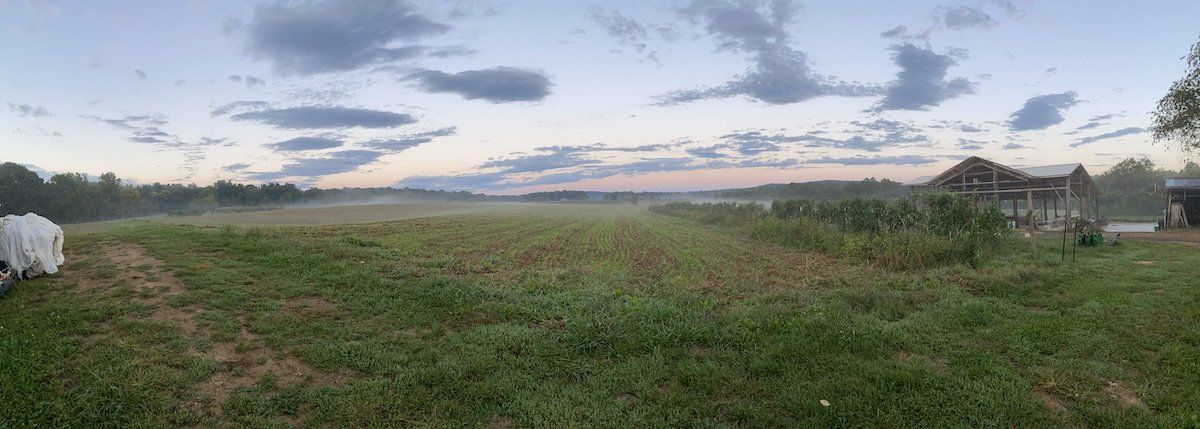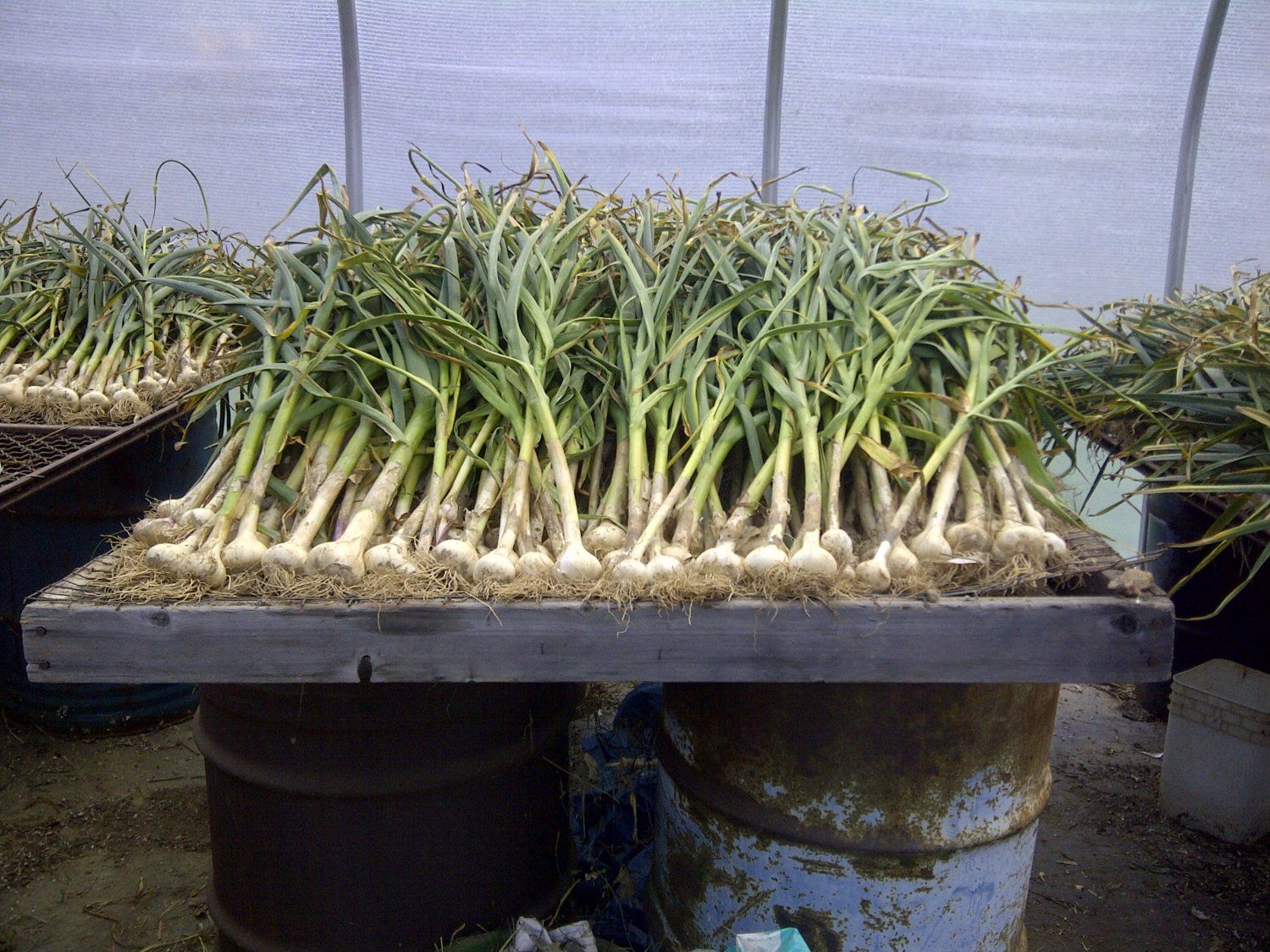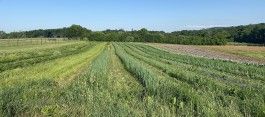 This week we are on the brink of peak alliums—onion family crops. We have scallions, leeks, fresh garlic, the last of the overwintered onions, the last of the garlic scapes. What other onion crops are there? Very soon it will be time to do the big garlic harvest and eventually it will be time to pull the onions and cure them. The cold and wet spring was great for leeks and scallions but the onions have suffered. Those conditions are ideal for allium worms—terrible little white grub things that eat the roots and kill the onions. They killed a lot of onions in April and early May.
This week we are on the brink of peak alliums—onion family crops. We have scallions, leeks, fresh garlic, the last of the overwintered onions, the last of the garlic scapes. What other onion crops are there? Very soon it will be time to do the big garlic harvest and eventually it will be time to pull the onions and cure them. The cold and wet spring was great for leeks and scallions but the onions have suffered. Those conditions are ideal for allium worms—terrible little white grub things that eat the roots and kill the onions. They killed a lot of onions in April and early May.
This is how it is with farming—a certain weather pattern is great for one vegetable and hard on another one. It is truly impossible to grow enough onions (almost by definition, since there seems to be no limit to how many onions we all can eat) and this year they will feel even more precious. Last year we grew enough garlic to last all the way to the end of the season. This year it looks like garlic might feel more precious too. But the scallions are growing beautifully.

We don't talk a lot about the difference between our vegetables and those you can easily get from the conventional agriculture world, but our garlic and onions are truly superior. Partly because we grow them without any chemical pesticides or herbicides and partly because they are fresh. The onions and garlic that we all get from regular sources are grown with a heavy dose of chemicals (it takes 9 months to grow garlic and about 5 months to grow an onion) because of the weed pressure. Because these foods are in the ground for so long, they absorb and hold a lot of those inputs. And then they are stored (very well) for a long time, and the flavor begins to fade away. We hear all the time about how amazing our garlic tastes. We are truly spoiled—we haven't eaten commercially grown garlic in years and years, but we do remember that it is not as pungent or powerful.
Enjoy the alliums! We love to grow them.
For more recipe ideas you can find us on Pinterest!




